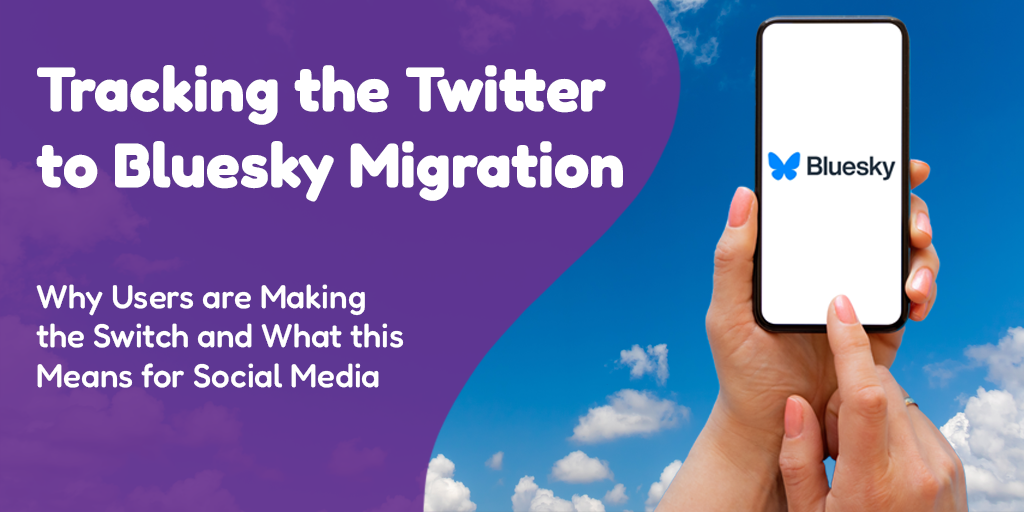 Posted by Courtney Fappiano on November 25th, 2024
Posted by Courtney Fappiano on November 25th, 2024In case you haven’t noticed, the social media platform Bluesky is suddenly dominating headlines and attracting record numbers of new users. What gives?
Since the U.S. election on November 5, specifically X (formerly Twitter) CEO Elon Musk’s apparent influence in Donald Trump’s victory, a growing wave of social media users — 18 million to date — have been leaving Twitter for Bluesky.
By leaving Twitter, we mean leaving in droves! So far, more than 115,000 users have abandoned Twitter or X, post-presidential election.
This mass migration signals a significant shift in user preferences and raises important questions about the future of social media.
The hasOptimization team is here to break that down.
The Basics: What is Bluesky?
Bluesky, initially incubated by Twitter in 2019, is a decentralized social media platform built on the AT Protocol, an open source framework built in-house. Unlike traditional platforms, Bluesky gives users control over their experience by offering customizable algorithms and greater transparency, an innovative approach that is resonating with users disillusioned by mainstream social media… and the election.
Why Are Users Leaving Twitter?
The shift away from Twitter began as the platform underwent significant changes under its new leadership. Controversial decisions, including alterations to content moderation, algorithmic priorities, and the introduction of paid features, have alienated long-time users. Many cite growing concerns over transparency, data privacy, and a perceived decline in user experience as primary reasons for seeking alternatives. And now… the election.
Check out this Full List of Celebrities Quitting X After Elon Musk Helps Trump Win
What Makes Bluesky Different?
Bluesky’s decentralized framework allows users to customize their feed algorithms, fostering a more tailored and user-centric experience. By prioritizing user control and transparency, Bluesky addresses many frustrations voiced by Twitter’s former users. Additionally, the platform’s open development model invites a sense of community collaboration that is absent from centralized platforms.
What This Shift Means for Social Media
The migration to Bluesky underscores a broader trend: users are demanding more ethical, transparent, and user-controlled platforms. Decentralization is emerging as a viable alternative to the one-size-fits-all model, putting pressure on traditional platforms to innovate or risk losing relevance.
For businesses and marketers, this shift presents both opportunities and challenges. Bluesky’s decentralized nature offers untapped potential for authentic engagement but may require rethinking strategies to align with its user-first ethos.
Looking Ahead
The Twitter-to-Bluesky migration represents more than just a change of platforms; it’s a cultural shift in how people engage online. As Bluesky continues to grow, its success may redefine what users expect from social media, inspiring other platforms to follow suit.
What does this mean for our clients?
As Courtney Fappiano, hasOptimization’s Client Relationship Manager explains:
“With the rise of more diverse social media platforms, coupled with the increasing politicization of some spaces, our clients now have the ability to choose platforms that align with their values and preferred ways of interacting. Unlike in the past, when options were limited to broader platforms like Twitter, Facebook, and Pinterest, today’s landscape offers alternatives that cater to specific interests, communities, and viewpoints.”
In the end, the choice between Twitter and Bluesky is more than a personal preference—it’s a reflection of where users believe the future of social media should head. For now, Bluesky’s promise of transparency, control, and innovation has captured the attention of those eager for change.
Want to learn more about how we can help you keep abreast of social media and digital marketing trends that will impact your business? Contact us to see which of our services will be the best fit for you!



